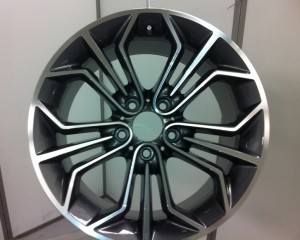Alloy wheel size is understood by looking at the wheel measurements of the alloys. When you are trying to assess wheel measurements, the key features that you need to understand are the width, diameter, the offset and the pitch circle diameter.
 What is the width?
What is the width?
The width of the wheel allows you to see how the wheels of the car will fit your car. If the width is too small, this will impact the look of your car as well as how it performs because the wheel fitment could be uncomfortable if the width is wrong. One tip many motoring enthusiasts like is having a wider width on the wheels because it makes grip easier when your car is moving.
What is diameter?
Diameter is defined as the width from the opposite ends of the rim of the wheel. The key feature of diameter for wheels is that it has to be personalised depending on what your car is like. Wheel fitment specialists can use information and their professional eye to decide which diameter measurements are needed for alloy wheels.
What is offset?
The offset of a car is the space between the imaginary line in the middle to the mounting face. Classic cars are known to have negative offset which can make the wheels pop from the exterior while newer cars don’t. It’s important to assess the offset of the wheels in order to have a car that you can rely on.
Why is pitch circle diameter important for alloys?
Pitch circle diameter is important if you are buying alloy wheels for your car. Wheel fitment specialists can be used to figure out the right PCD size which is measured in millimetres. The pitch circle diameter is a point in the centre of of a mounting hole that is critical when fitting certain types of alloy wheels. Understanding alloy size measurement is extremely important whether you have a new or used car that you are considering to purchase.

 Follow
Follow